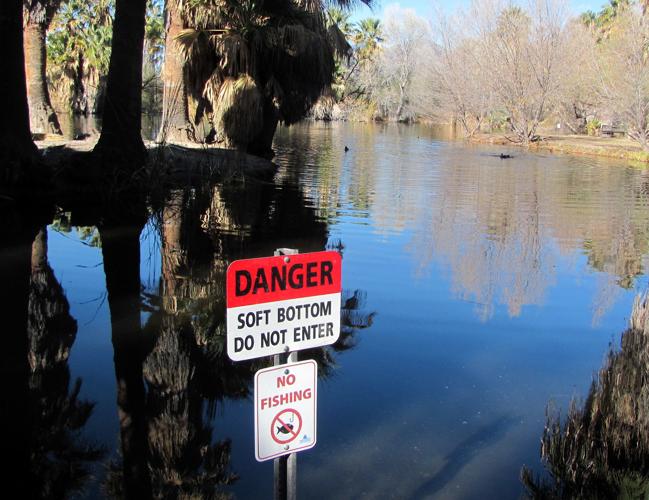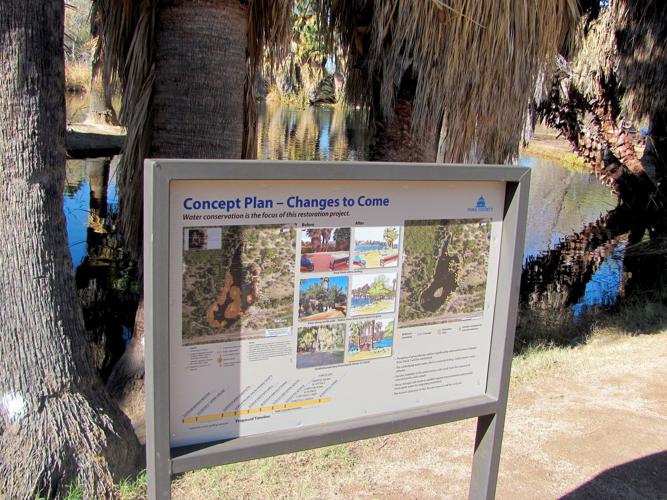Work on a multistage project to restore the popular main pond at Agua Caliente Park — with an emphasis on water conservation — is scheduled to begin in February and be completed by October 2019.
The restoration is necessary because the pond, which once was fed by a spring, has required pumping 60,000 to 100,000 gallons of groundwater daily in recent years since the spring went dry.
The needed work includes:
- Draining the 3½-acre pond to accommodate dredging the bottom.
- Installing a polymer-amended soil lining while the pond is dry to reduce water loss when it is refilled.
- Replanting cattails in containers and increasing the water depth at the pond’s edge to control the spread of cattails.
- Removing some of the many palm trees around the pond and pruning the frond skirts of others.
Officials of Pima County, which manages the park northeast of Tucson, have posted details of the work and a schedule for each stage on a sign beside the pond.
A one-time opportunity for the public to fish for bluegills, bass and catfish at the pond from Jan. 2-31 was announced this week. Fishing usually isn’t allowed in the park because it conflicts with other uses, but it will be permitted in this case because the pond is to be drained.
“The main and primary goal for the project is to conserve water,” said Karen Simms, natural resources division manager with Pima County Natural Resources, Parks and Recreation.
“The project is going to be initiated in February when we’ll stop pumping water into the pond and begin the drying-up process, which we expect will take several months,” Simms said.
She said work at the site — removing some palms and cattails, constructing the liner and completing related work — will probably take place during the summer.
“If everything goes as planned, we hope to be refilling the pond from September into October,” Simms said.
She said the cost of the restoration project is expected to be between $750,000 and $1 million.
The decision to offer the one-time fishing opportunity to the public was made after it was determined there wasn’t an efficient way to collect and transport the pond’s fish elsewhere.
“A decision was made that if we were going to lose fish out of the pond anyway, it would be a great opportunity for the public to come in and enjoy fishing,” Simms said.
County officials recommend that fishing enthusiasts use top-water lures or weedless lures and they ask that grass carp not be taken. Fish samples have been tested for heavy metals and are within safe limits for consumption, the officials said.








